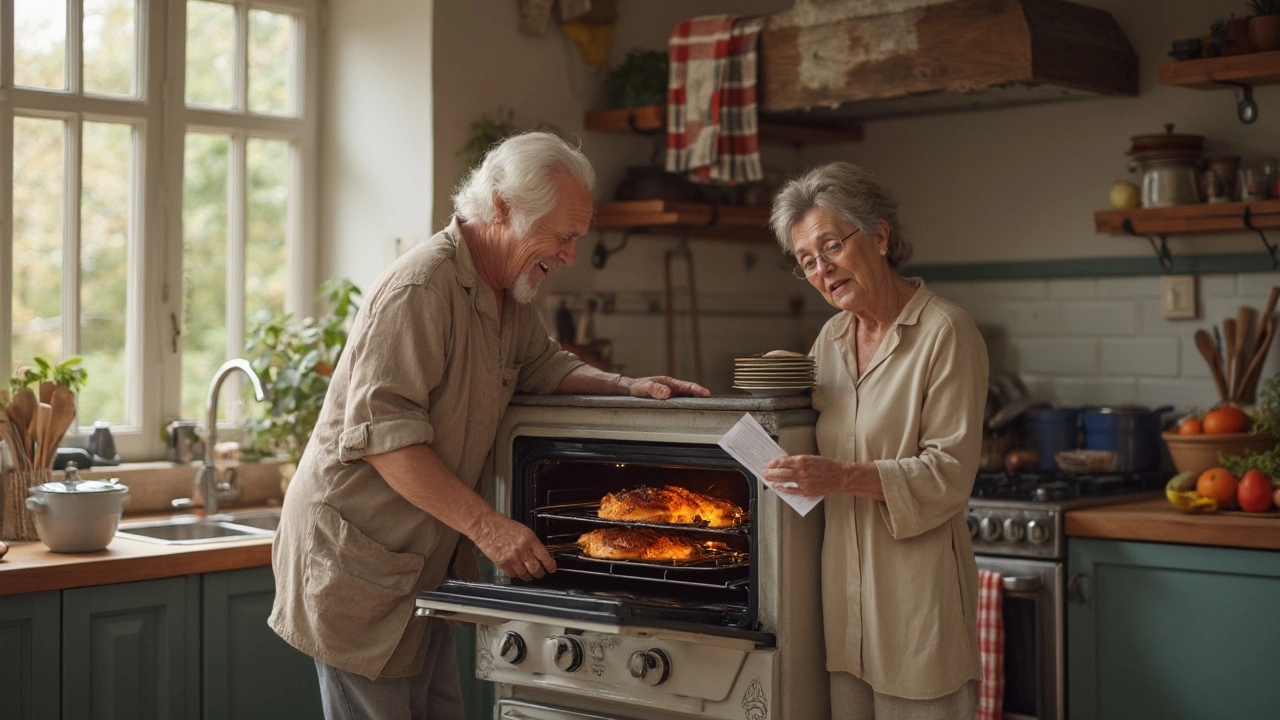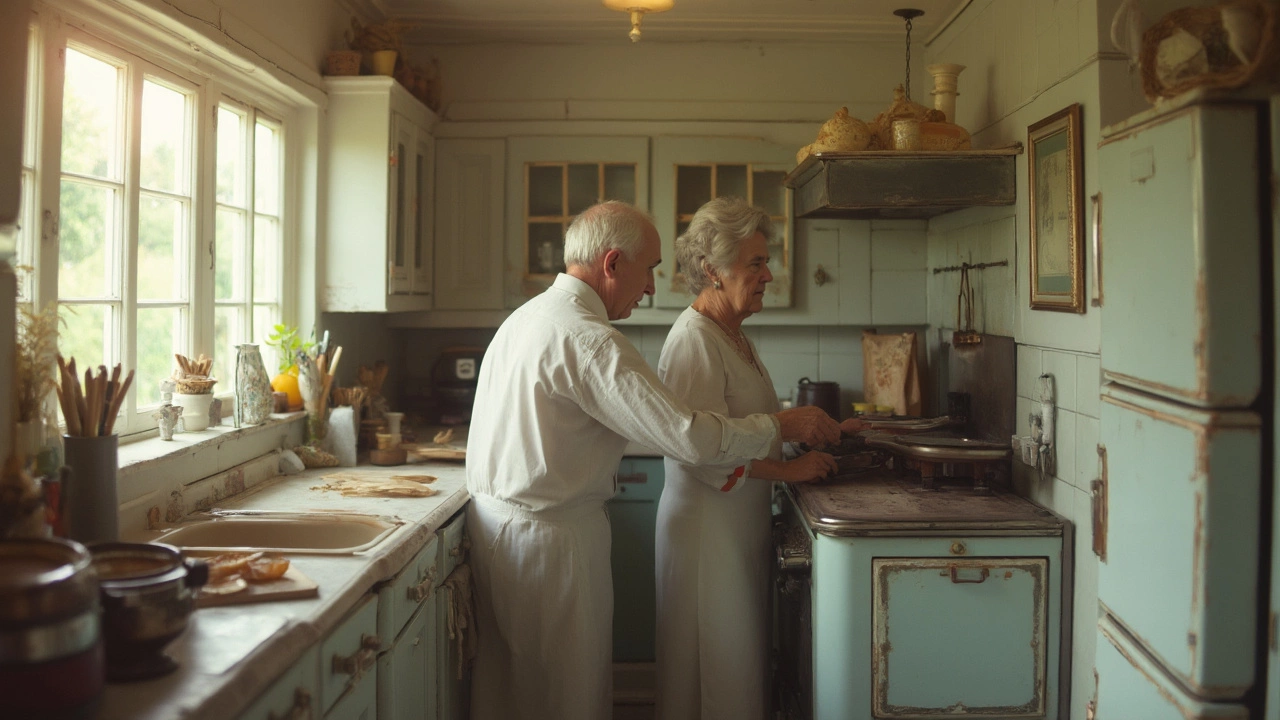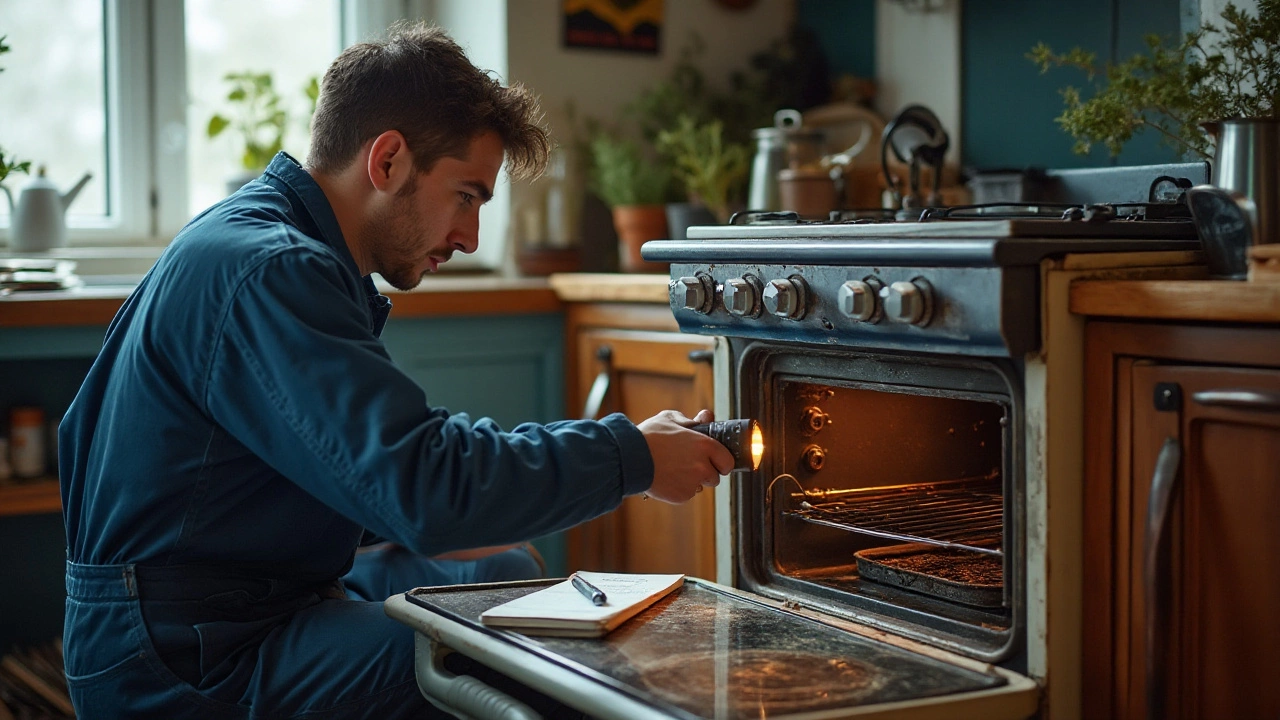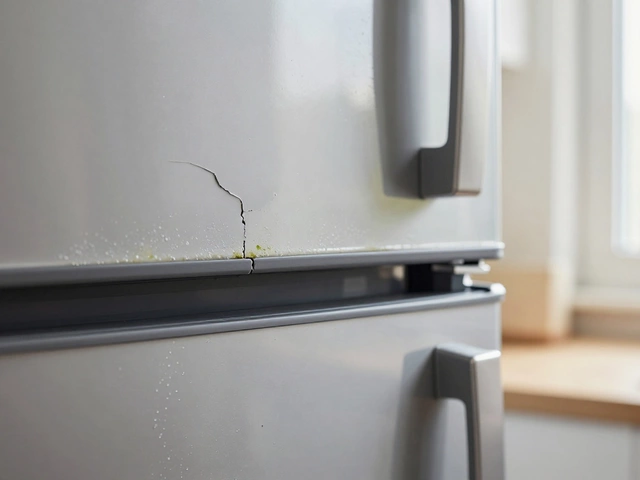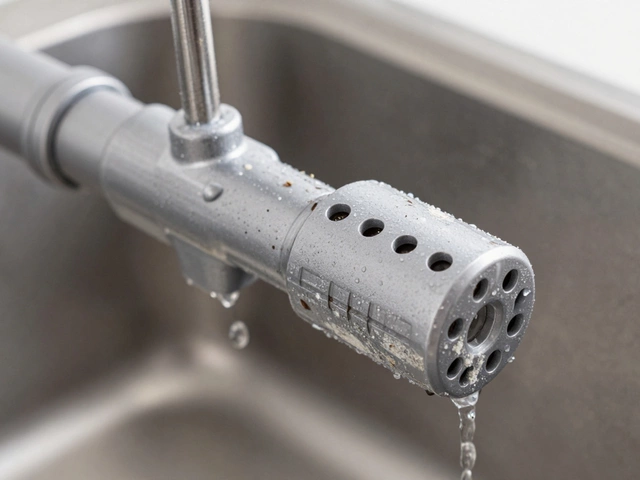Ever wonder if your range oven is quietly running out of time? You’re not alone. Lots of folks just keep using their oven until it fizzles out, but knowing what to expect can save you cash and headaches down the road. Most electric range ovens last anywhere from 13 to 17 years—and that’s with typical use and a bit of care here and there.
But here’s the kicker: ovens don’t just give up all at once. Small issues build up. Poor cleaning habits, power surges, or just heavy holiday cooking can all chip away at your oven’s life. Even the smelliest burnt-on cheese or a fried up thermostat can cut things short. Stick around as I break down what really determines your oven’s lifespan and how you can keep yours out of the landfill a little longer.
- Average Lifespan of a Range Oven
- Big Factors That Impact Longevity
- Maintenance That Really Matters
- Signs It’s Time for a New Oven
- When Repair Is Worth It (And When It’s Not)
Average Lifespan of a Range Oven
Here’s the honest scoop: most electric range ovens are built to last between 13 and 17 years. That number comes straight from appliance makers and a bunch of repair guys I’ve talked to. If you look at stats from the Association of Home Appliance Manufacturers, the average sweet spot lands at about 15 years. Of course, that’s not a magic number—a lot depends on how hard you push your oven and how well you treat it.
Brands matter, too. Bigger names like GE, Whirlpool, and Frigidaire usually stand up better over the long haul. But even the best brand won’t survive constant spills or never-ending marathon baking sessions without some wear and tear.
For folks who use their oven a lot—think families who cook nightly or do tons of hosting—expect the lower end of that lifespan. If you mostly use the microwave and barely touch the oven, you might squeak out a few extra years. Also, don’t forget the oven’s components: heating elements can burn out, control boards fail, or the door seal gets loose. Replacing those can help stretch years onto your oven, if the rest of it is still trucking along.
| Usage Level | Expected Lifespan |
|---|---|
| Heavy (daily use, big meals) | 13-14 years |
| Moderate (a few times a week) | 15 years |
| Light (occasional use) | 16-17 years |
Keep in mind, range oven life expectancy isn’t set in stone. How you clean, repair, and use your oven makes the real difference, more than anything stamped on a warranty card. Getting those extra years out of your trusty cooker? Totally possible—with a little care and a watchful eye.
Big Factors That Impact Longevity
Plenty of stuff plays into how long your oven sticks around. You can’t just blame old age when it finally dies—how you use it and take care of it make a huge difference. I’ll spell out the biggest troublemakers people overlook.
First up, usage matters. If you’re the type baking cookies for every birthday or hosting all the family dinners, your oven’s clock will tick faster. Heavy, daily use wears out the heating elements and electronics quicker than a couple who only cooks on weekends.
Maintenance (or a lack of it) is another biggie. Simple chores like cleaning up spills and wiping the door seal matter more than you’d think. Grease and gunk can mess with the heating coil, which forces your oven to work harder. That stress shortens its lifespan.
Then you’ve got electrical woes. Power surges or bad wiring put a ton of strain on the controls and the circuit board. A surge from a lightning storm can fry key parts in an instant. That’s not super common, but it’s an expensive way for an oven to meet its end.
The quality of the oven itself makes a clear difference too. No surprise that a high-end model from a trusted brand tends to outlast those bargain buys. Here’s a quick peek at how lifespan stacks up for different oven brands and price ranges:
| Brand/Price Range | Average Lifespan (Years) |
|---|---|
| Basic Budget Model | 10–12 |
| Mid-Range Brand | 13–15 |
| Top-Tier (Premium) | 15–18 |
Even where you stash your oven matters. Ovens crammed in tight spots with poor ventilation get hotter and break down sooner. And if you slam the door or overpack the racks, that adds stress to the hinges and elements inside.
If you want to squeeze the most out of your range oven life expectancy, keep these in mind:
- Keep it clean—wipe spills ASAP and check the seals now and then.
- Don’t overload with heavy trays or cookware.
- Stick with oven-safe cleaners; harsh chemicals can chew up sensors and seals.
- Plug into a surge protector if your area gets power spikes.
- Follow manufacturer instructions for care and use. Skipping the manual can cost you later.
Basically, a few good habits go a long way. Treat your oven right and it’ll return the favor with more years—and fewer repair bills.

Maintenance That Really Matters
Keeping up on regular care isn’t just busy work—it’s what gives your oven a fighting chance to hit the 15-year mark or more. The real trick is knowing what actually counts. A lot of people think you just have to wipe it down, but there’s a bit more to it if you want that range oven life expectancy to stretch.
- Deep Cleaning is Key: Grime and food spills don’t just look ugly—they cook onto heating elements and racks, making the oven work harder and wear out faster. Use a non-abrasive cleaner after big cooking sessions, not just the holidays.
- Seal Checks Count: That rubbery gasket around the door isn’t just for show. If it cracks or warps, heat leaks out, and the oven burns out the elements faster. Check it every few months. Replacing it is cheap and saves a ton on your energy bill, too.
- Watch Those Heating Elements: If you notice hot spots, uneven baking, or food that takes forever to cook, inspect the elements for burn marks or warping. Swapping out a bad element is usually way cheaper than calling a repairman—not to mention, you’ll avoid bigger problems later.
- Keep Vents and Fans Clear: A blocked fan or vent means the oven can’t cool itself, which toasts the electronics and reduces the oven’s life. Give vents a quick vacuum now and then, especially if you’ve got pets or live somewhere dusty.
People who actually do even half of these steps usually find their oven runs smoother and rarely breaks down. Here’s a quick look at how proper care stacks up, based on some appliance industry data I pulled:
| Maintenance Level | Expected Lifespan |
|---|---|
| Rarely Cleaned / No Checks | 10 - 12 years |
| Occasional Wipe-down / Some Checks | 13 - 15 years |
| Regular Cleaning / Full Checklist | 16 - 20 years |
So, the next time you have five minutes after dinner, a quick wipedown or gasket check can actually pay off. You’re not just cleaning up for your own sanity—you’re buying your oven more birthdays.
Signs It’s Time for a New Oven
It’s not always obvious when your oven is headed for retirement, but a few red flags can tell you it’s more than just another busted bake element. Ignoring these signs can mean higher bills, uneven food, or even bigger safety risks. Here are the top ways to spot when your old oven’s on its last legs.
- Heating is all over the place: If you’re constantly burning the edges of your pizza or your cakes never cook evenly, it’s probably not you—it’s your oven. Temperature swings of 20 degrees or more and dead spots are signs the heating system or thermostat is failing.
- Repairs are more frequent and pricier: If you’ve called for an oven repair twice in the last year, it’s time to weigh your costs. A rule of thumb: If any repair is more than half the cost of a new unit, it’s better to replace than fix.
- Controls are unreliable or broken: Buttons that stick, digital screens that flicker, or dials that don’t do anything mean key components are wearing out. If these parts can’t be replaced or don’t stay fixed, you’re fighting a losing battle.
- It’s getting up in age: Ovens tend to give out after 13-17 years. If yours has a few silver hairs (or rust spots) and it struggles to keep up, don’t ignore it—manufacturers stop stocking certain parts after 10 years, so repairs become tricky.
- You’re dealing with unusual smells or smoke: Burnt wires, lingering electrical or plastic smells, or persistent smoke (even after a deep clean) usually mean internal damage.
For a quick look at telltale signals, check out this summary:
| Issue | What It Means |
|---|---|
| Uneven heating | Failing element or thermostat |
| Frequent repairs required | Systemic breakdown, costly fixes |
| Non-responsive controls | Control board failure |
| Strange smells or smoke | Possible wiring or insulation damage |
| Older than 15 years | Near end of expected life |
If you’ve ticked off several of these, don’t keep sinking money and time into the old unit. The cost of limping along with a dying oven adds up fast—higher energy use, failed recipes, and constant hassle. Sometimes, letting go is the smart option for both your sanity and your wallet, especially when it comes to something as critical as range oven life expectancy.

When Repair Is Worth It (And When It’s Not)
Deciding whether to fix your range oven or finally replace it can be a real pain. It comes down to a few numbers and how attached you are to old appliances. Something that surprises people: most repairs, like swapping a bake element or a door gasket, are much cheaper than buying another oven. Usually, if fixing your oven costs less than half the price of a new one, it’s worth considering the repair.
You should also look at your oven’s age. Electric range ovens hit their prime between 10 and 15 years. If yours is under 10 years old, fixing it usually pays off. Over 15, it might be living on borrowed time anyway, and pouring money into it rarely makes sense—especially with newer models using less energy and offering safer features.
| Type of Repair | Typical Cost Range (USD) | DIY Possible? | Replacement Worth It? |
|---|---|---|---|
| Heating Element | $100-$250 | Yes, with basic tools | No, repair it |
| Thermostat | $120-$275 | Sometimes | No, repair it |
| Control Board | $200-$600 | No | Maybe, depends on oven age |
| Door Seal | $50-$120 | Yes | No, repair it |
| Major Structural Damage | $400+ | No | Yes, replace |
Here’s how to figure it out fast:
- Check oven age: Under 10 years? Most repairs are smart. Over 15? Replacing is usually best.
- Repair bill over half a new oven’s price? Put that cash toward a new one.
- Big things failing, like the control board and heating element at the same time? Time to move on.
- If your oven keeps breaking every few months, it’ll only keep gobbling up money and patience.
Another thing: if parts for your model are getting hard to find, or the oven is starting to fail at safety stuff (like overheating), don’t drag out repairs. Put safety first. Bottom line: weigh the costs, think about how old the oven is, and don’t forget about energy savings with newer models. Your wallet (and your sanity) will thank you.
